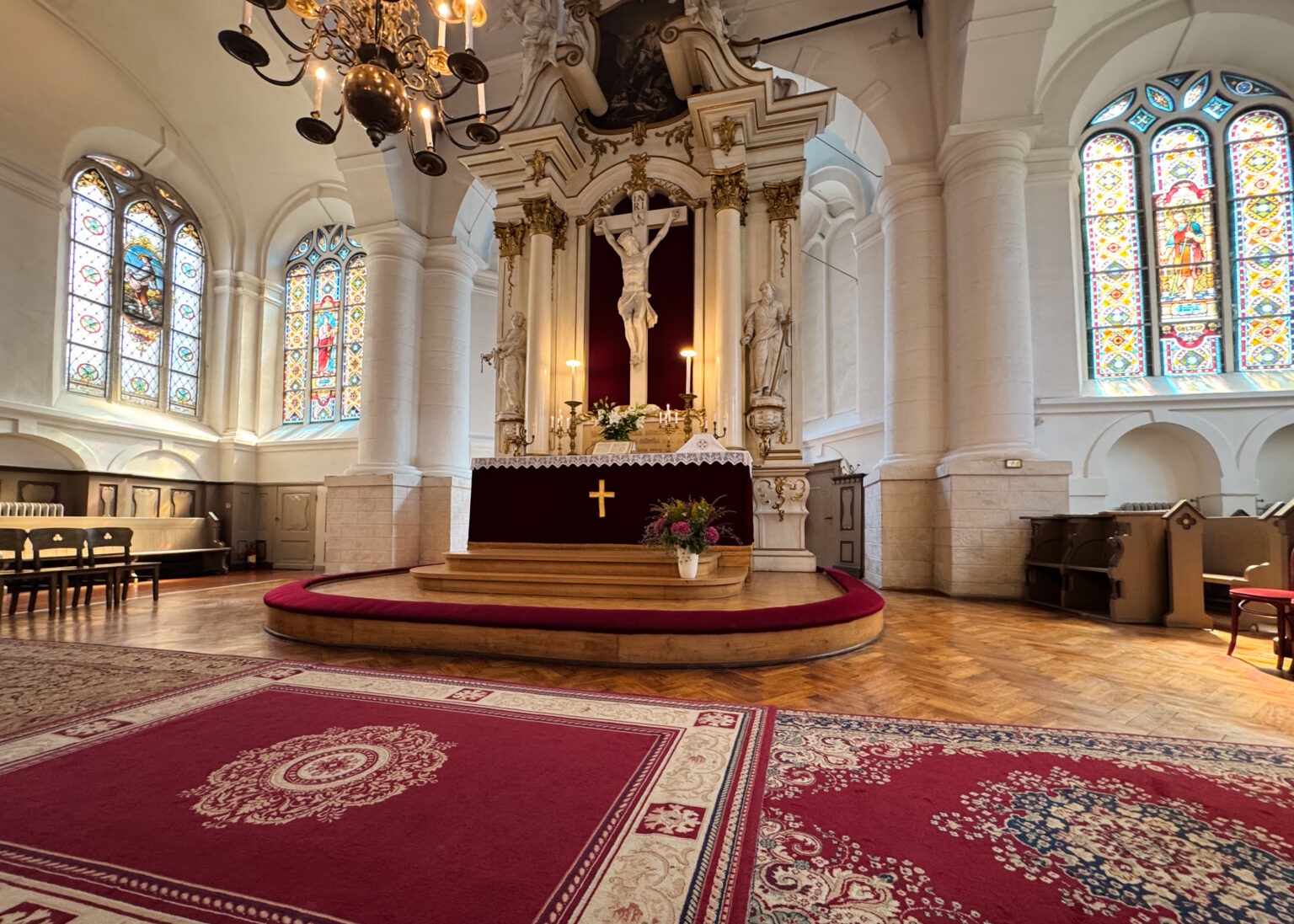Arriving in Latvia from Turkey, we were startled by the contrast between the two. Part of this was climate – 100F temps in Cappadocia to 70F in Riga. The other big contrast was in leaving a country with a mosque around every corner and calls to prayer played over speakers several times a day, then getting to Riga where the skyline is full of steeples and church bells chime every morning and at noon.
I knew before coming here that there would be a Lutheran church in town that held English language services. (They do also have weekly services in Latvian.) These services at St John have felt familiar, even using the same hymnal as our home congregation. Something that I appreciated was that they insert little bookmarks into the hymnal to mark the page where the order of service begins along with a brief guide of the pages you will need to turn to. The English-speaking portion of the congregation seems to be made up of a few residents who speak English, visitors like ourselves who are passing through, and people involved with a seminary here that trains new Lutheran pastors from throughout Europe.
A little about the history of St John
Before becoming a sovereign nation in the early 20th century, the Latvian people were governed by Germany, then also Poland and Sweden, for several hundred years. The church where we are worshiping was built in the 1300s as a Catholic Church, and having been in correspondence with Martin Luther during the time of the Reformation and agreeing with his teachings, were early converts. Lutheranism eventually became the predominant church body in Latvia, and remained so until the time of the Soviet occupation.


